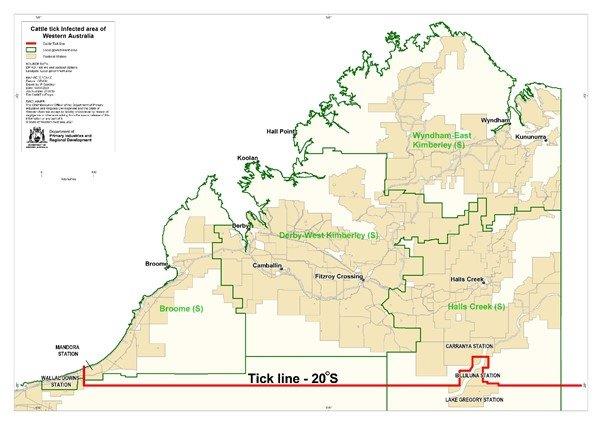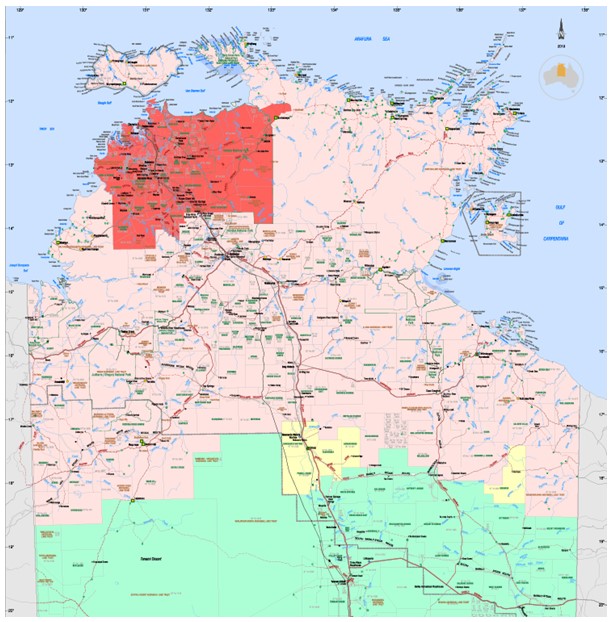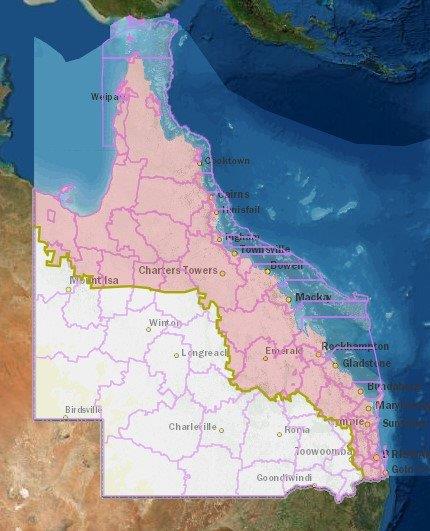Cattle tick regulations
Cattle ticks (figure 1) are one of the most costly cattle parasites in the world, with the estimated cost to the Australian cattle industry alone of around $160 million/year.

In Australia, inspection and compulsory dipping were established to prevent the spread of ticks on cattle. Tick lines are established to control the spread of cattle tick. Each state and territory has regulations to protect cattle from potentially devastating outbreaks of tick fever. The tick lines divide areas of tick-free zones and tick‑infected zones. Regulations for treatment, inspection and certification vary between states and territories.
Western Australian tick line requirements
Figure 2 shows the cattle tick zones of Western Australia. The requirements include:
- prior treatment in an accredited plunge dip (approved annually on a case-by-case basis) and inspection of cattle by Western Australia’s Department of Primary Industries and Regional Development inspectors
- horses and goats moved across the tick line also require supervised treatment and inspection.
For more information on the cattle tick control program, go to the Western Australian's Primary Industry and Regional Development website.

Northern Territory tick line requirements
Due to resistant cattle ticks (Parkhurst strain) around Darwin (as well as regions that differ in tick infestations because of varying seasons) the Northern Territory has 4 separate regulatory areas for cattle ticks (figure 3):
- parkhurst tick zone
- infected zone
- the control zone, and
- tick-free zone.

For more details on regulatory areas for cattle ticks, go to the Northern Territory Government website.
Queensland tick line requirements
Queensland has 2 tick zones - the tick-infested zone and the tick-free zone as seen in figure 4. Moving cattle or other ‘tick carriers’ across the tick line from the infested zone to the tick-free zone requires an inspection by accredited certifiers. The owner or manager supplies the accredited certifier with details of recent tick treatments and arranges for inspection. Once livestock have been inspected, the accredited certifier issues a biosecurity certificate that enables transport across the Queensland tick line or across state borders.
For Queensland’s accredited certifiers for cattle tick, go to the Queensland Government’s Business Queensland website.

New South Wales tick line requirements
The New South Wales (NSW) official state policy under the Biosecurity Act 2015 (Cth) is to continue to prevent or eradicate all cattle ticks.
To achieve this, people transporting cattle buffalo, bison and deer into NSW from the Queensland tick‑infested area are required to treat stock with a tickicide (if necessary) and have them inspected and a biosecurity certificate issued by an authorised officer or accredited certifier.
Secondary tick carriers, such as horses, sheep, goats and camelids, must be accompanied by a record of movement, available with detailed instructions on the NSW Government’s Department of Primary Industries website.
